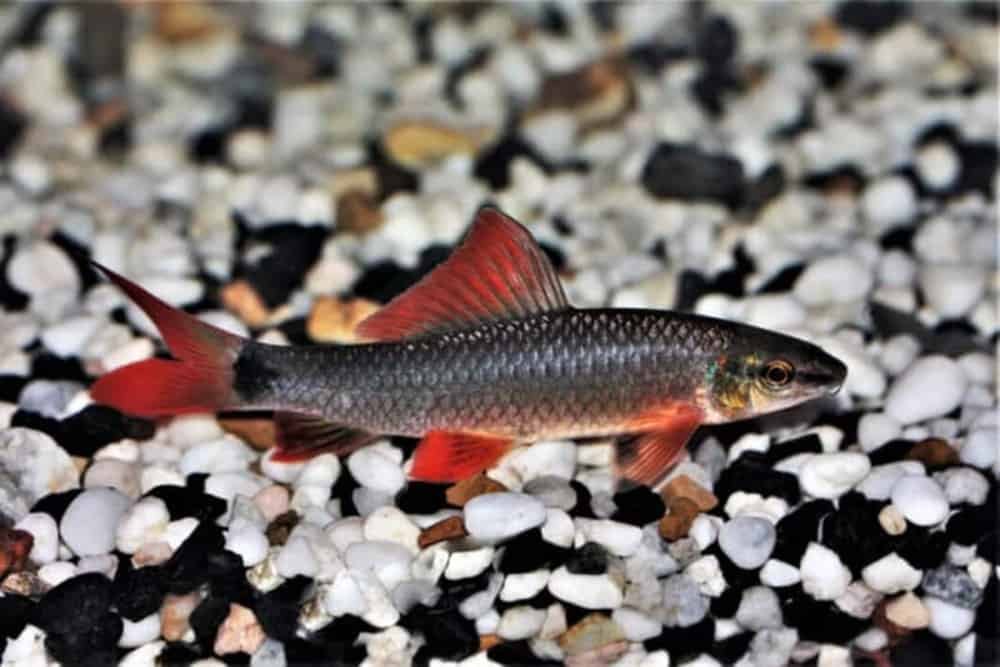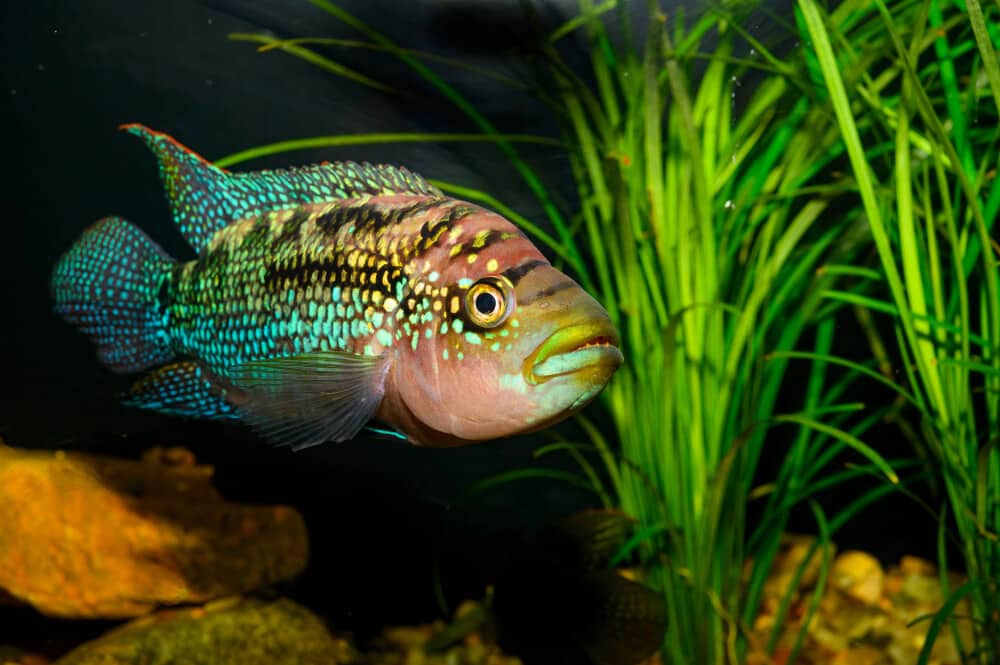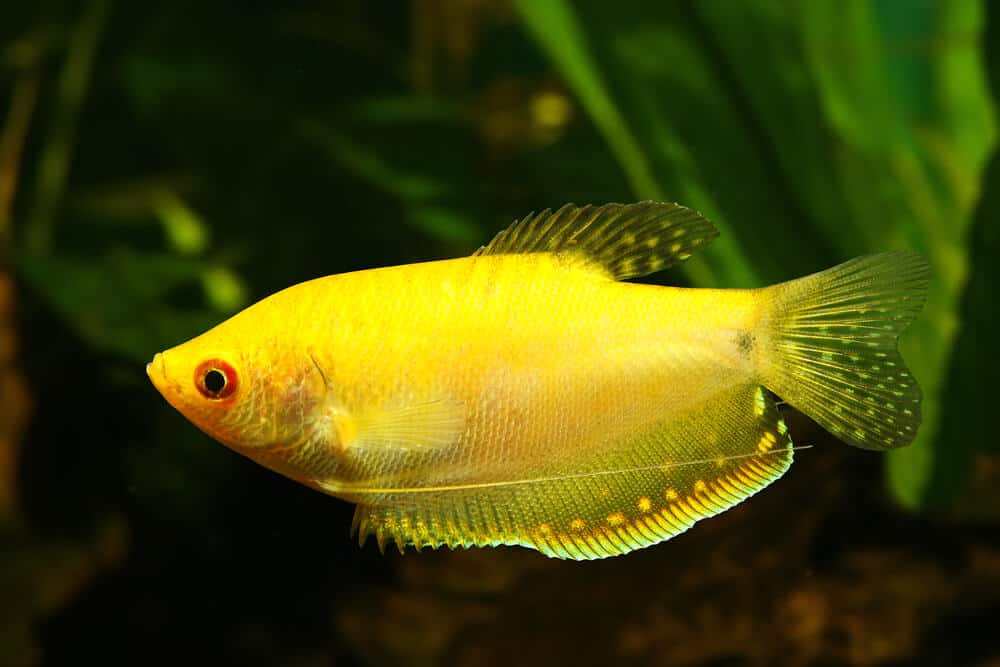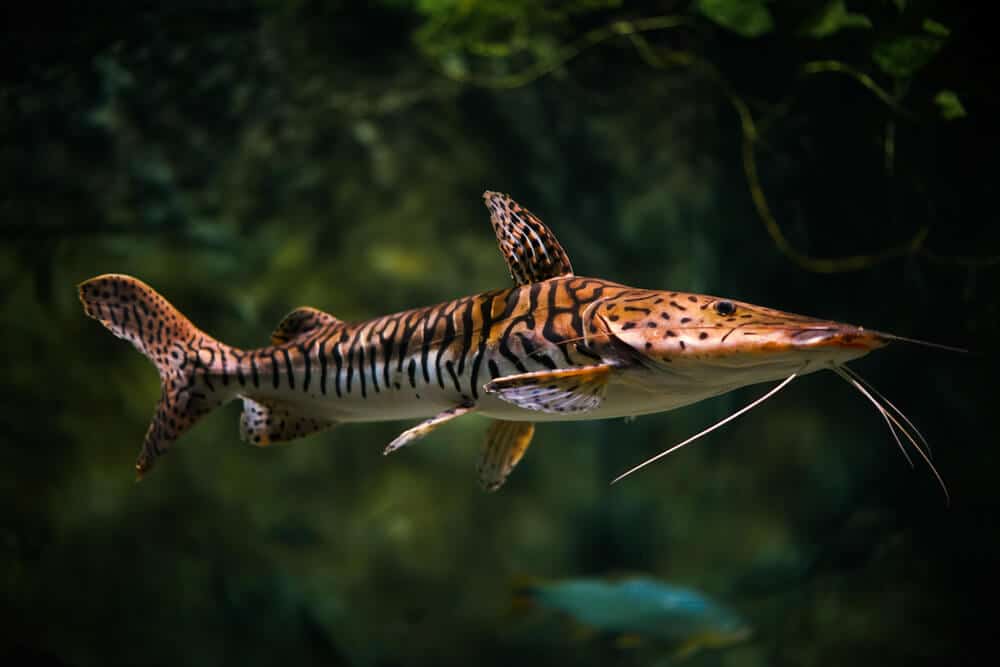How Do You Care For Molly Fish?
Are you curious about the best way to care for Molly fish? Look no further! This article is here to provide you with all the tips and tricks you need to ensure your Molly fish thrive in their aquarium. From maintaining the right water conditions to feeding them a balanced diet, we’ll guide you through the ins and outs of Molly fish care. So, get ready to give your finned friends the best care possible and watch them flourish in their aquatic home!
Habitat and Tank Setup
Tank Size
When setting up a tank for Molly fish, it’s important to consider their size and active nature. A tank size of at least 20 gallons is recommended to provide enough space for them to swim and explore.
Water Parameters
Molly fish prefer slightly alkaline water with a pH level between 7.5 and 8.5. They also thrive in water with a temperature between 70 and 82 degrees Fahrenheit and a hardness level of 10 to 20 dGH.
Filtration
Proper filtration is essential for maintaining a healthy and clean environment for Molly fish. A good quality filter that provides both mechanical and biological filtration is recommended. It helps remove impurities, control ammonia, nitrate, and nitrite levels, and provides oxygenation.
Substrate
Choosing the right substrate is important to mimic their natural habitat. A fine-grained substrate like sand or small gravel works well for Molly fish. It’s important to avoid sharp or rough substrates that can injure their delicate fins.
Decorations
Adding decorations to the tank not only enhances its aesthetic appeal but also provides hiding spots and territorial boundaries for Molly fish. Live or artificial plants, driftwood, and rocks can be included to simulate their natural habitat and reduce stress.
Lighting
Proper lighting is important for the growth of live plants in the tank. A combination of bright and dim lighting that replicates a natural day-night cycle is recommended. Aim for 10-12 hours of lighting daily to provide enough light for the plants in the tank.
Temperature
Molly fish thrive in tropical temperatures, so it’s crucial to maintain a consistent temperature in the tank. Use a reliable aquarium heater to ensure the water temperature remains within the preferred range of 70 to 82 degrees Fahrenheit.
Water Changes
Regular water changes are essential for maintaining water quality and the overall health of Molly fish. Aim for weekly water changes of around 25% to remove toxins and replenish essential minerals. Test the water regularly to ensure pH, ammonia, nitrate, and nitrite levels are within acceptable ranges.
Tank Mates
When choosing tank mates for Molly fish, it’s important to consider their peaceful nature. They generally get along well with other peaceful community fish, such as tetras, guppies, and platies. However, it’s best to avoid aggressive or fin-nipping species that could harm or stress out the Molly fish.
Breeding Tank
If you plan to breed Molly fish, setting up a separate breeding tank is highly recommended. This ensures the fry have a safe environment to grow without being threatened or eaten by other tank mates. The breeding tank should be equipped with appropriate hiding spots and plants for the fry’s protection.
Feeding
Best Diet
Molly fish are omnivorous, meaning they eat both plant and animal matter. It’s best to provide a balanced diet consisting of high-quality flake or pellet food designed for tropical fish. Look for options that contain a mix of proteins, vitamins, and minerals to support their overall health and vitality.
Feeding Frequency
Molly fish should be fed small portions of food multiple times a day. Aim for 2-3 feedings per day, ensuring they consume all the food within a few minutes. Overfeeding can lead to health issues and poor water quality, so it’s important to feed them in controlled portions.
Feeding Techniques
To ensure all Molly fish have access to food, scatter the food throughout the tank or use a sinking food formulated for bottom-dwelling fish. This prevents dominant fish from monopolizing the food, ensuring all fish receive their fair share.
Supplementary Foods
In addition to their staple diet of flake or pellet food, Molly fish can also benefit from occasional feedings of live or frozen foods. Brine shrimp, bloodworms, and daphnia are excellent choices to provide variety and additional nutritional benefits.
Avoid Overfeeding
Overfeeding is a common mistake that can lead to numerous health issues for Molly fish. It’s important to feed them in small portions to prevent overeating and subsequent problems like obesity, bloating, and poor water quality. Always observe their feeding behavior and adjust the amount accordingly.
Health and Disease
Common Health Issues
Molly fish are generally hardy, but they can still be susceptible to certain health issues. Some common ailments include fin rot, ich, bacterial infections, and fungal infections. Monitoring their behavior and appearance regularly can help identify any signs of illness.
Signs of Illness
When Molly fish are unwell, they may display various symptoms such as loss of appetite, lethargy, abnormal swimming behavior, changes in coloration, visible wounds or sores, or excessive scratching against tank objects. Be vigilant and seek treatment promptly if you notice any unusual signs.
Quarantine Tank
Having a quarantine tank is highly recommended when introducing new fish or treating sick fish. This separate tank helps prevent the spread of diseases to the main tank and allows for closer observation and treatment of individual fish.
Proper Handling
When handling Molly fish or performing tank maintenance, it’s important to do so with care. Use a net specifically designed for aquarium use to avoid injuring their delicate fins. Avoid sudden movements and always keep your hands wet to prevent damaging their slimy protective coating.
Medication and Treatment
If your Molly fish fall ill, it’s important to consult with a veterinarian or an experienced fish keeper for proper diagnosis and treatment options. Follow the recommended medications and treatment protocols diligently to ensure the best chance of recovery for your fish.
Behavior and Socialization
Active and Inquisitive Nature
Molly fish are known for being active and curious, constantly exploring their environment. They enjoy interacting with their surroundings, including plants, decorations, and other tank mates. Providing plenty of stimulation and hiding spots can help promote their natural behavior.
Group or Pairs
Molly fish are sociable and thrive in groups or pairs. Keeping them in groups of three or more reduces stress and promotes a more natural social dynamic. However, if keeping a single pair, ensure they have enough space and hiding spots to establish territories.
Avoid Aggression
While Molly fish are generally peaceful, aggression can occasionally occur, especially when kept in smaller tanks or overcrowded conditions. To minimize aggression, provide ample space and hiding spots, and avoid mixing different Molly varieties together.
Compatibility with Other Fish
Molly fish are generally compatible with other peaceful community fish. Take care to avoid aggressive or fin-nipping species that may harm or harass the Molly fish. It’s always a good idea to research the compatibility of potential tank mates before introducing them.
Creating Hiding Spots
Adding plants, caves, and other decorations to the tank creates hiding spots for Molly fish. These spaces provide them with security and reduce stress, especially if the tank is populated with other fish. Dense vegetation or floating plants like Amazon frogbit can also serve as hiding spots.
Providing Stimulation
Molly fish thrive in environments that provide mental stimulation. Introduce floating toys, like ping pong balls, or occasional live foods to encourage natural foraging behavior. Regularly rearrange the tank decorations to keep their environment interesting and engaging.
Tank Maintenance
Regular Water Testing
Regular water testing is crucial for monitoring the water parameters and ensuring the tank remains healthy for Molly fish. Invest in a quality test kit that can measure levels of ammonia, nitrate, nitrite, pH, and hardness. Test the water weekly and adjust parameters as needed.
Cleaning the Tank
Regular tank cleaning is essential for maintaining water quality and the overall health of your Molly fish. Clean the glass, remove any uneaten food or debris, and vacuum the substrate during water changes. Use a dedicated aquarium-safe sponge or scraper to avoid damaging the glass.
Maintenance Schedule
Create a regular maintenance schedule to stay on top of your tank’s needs. This can include water changes, filter cleaning, checking equipment, and testing water parameters. Consistency is key to providing a healthy and stable environment for your Molly fish.
Checking Equipment
Regularly inspect and clean your tank’s equipment, including filters, heaters, and air pumps. Remove any debris that may be obstructing them and ensure they are functioning properly. Faulty or malfunctioning equipment can lead to fluctuations in water conditions and pose a risk to your fish.
Monitoring Nitrogen Cycle
Understanding and monitoring the nitrogen cycle is crucial for maintaining a healthy tank environment. Regularly test ammonia, nitrate, and nitrite levels to ensure they remain at safe levels for your Molly fish. Be prepared to perform additional water changes if there are any imbalances in the nitrogen cycle.
Breeding and Fry Care
Separate Breeding Tank
Setting up a separate breeding tank is essential for successful Molly fish breeding. This tank should be appropriately sized and equipped with hiding spots, plants, and other suitable breeding features. This separate environment allows you to closely monitor the breeding process without interference from other tank mates.
Selective Pairing
When selecting breeding pairs, it’s important to choose healthy and mature fish. Avoid pairing close relatives to prevent genetic issues. Select pairs with distinct coloration or desired traits to produce offspring with the desired characteristics.
Conditioning the Breeding Pair
Before introducing the breeding pair, it’s important to condition them with a high-quality diet. Feed them a balanced diet consisting of live or frozen foods to enhance their fertility and readiness for breeding. This conditioning period may last for a few weeks to ensure optimal results.
Introducing the Pair
Introduce the conditioned breeding pair into the designated breeding tank. Ensure the tank is properly set up with hiding spots and plants to provide privacy and security during the breeding process. Monitor their behavior closely to ensure compatibility and successful breeding.
Spawning Behavior
Molly fish are livebearers, meaning they give birth to free-swimming fry instead of laying eggs. The female Molly fish will release fry periodically over several weeks. The males may display mating behavior, such as chasing or courting the females. Once mating occurs, the female will undergo a gestation period before giving birth to the fry.
Caring for Fry
After the female Molly fish gives birth, it’s important to remove any adult fish from the breeding tank to prevent them from preying on the fry. The fry should be fed a diet specifically formulated for their size, such as powdered fry food or baby brine shrimp. Provide hiding spots and gentle filtration to keep the water clean and safe for the fry.
Separating the Fry
To prevent overcrowding and ensure the well-being of the fry, it’s important to separate them into a dedicated fry tank once they are large enough to avoid being consumed by adult fish. Monitor their growth and health closely, and provide appropriate care until they are ready to be reintroduced to the main tank.
Common Mistakes to Avoid
Overstocking the Tank
One of the most common mistakes in fishkeeping is overstocking the tank. Overcrowding can lead to poor water quality, stress, and increased aggression among fish. Ensure you provide ample space and proper filtration for your Molly fish and carefully consider the number of fish suitable for your tank size.
Poor Water Quality
Maintaining good water quality is crucial for the health and well-being of Molly fish. Neglecting regular water changes, overfeeding, and using inadequate filtration can lead to issues like ammonia spikes, nitrate buildup, and poor oxygenation. Regular testing and water parameter maintenance are essential to avoid unhealthy conditions.
Improper Feeding
Overfeeding can cause numerous health problems for Molly fish, including obesity, bloating, and poor water quality. Follow a feeding schedule and provide controlled portions to prevent overeating. Ensure the food offered is nutritionally balanced and varied to promote their overall health and vitality.
Lack of Research
Proper research is essential when keeping any fish species, including Molly fish. Understanding their requirements, compatibility, and potential issues can help you provide the best care possible. Stay informed about their specific needs and behavior to ensure a successful and fulfilling fishkeeping experience.
Neglecting Water Changes
Regular water changes are essential for maintaining water quality and the overall health of your Molly fish. Neglecting water changes can lead to toxin buildup, poor oxygenation, and increased stress levels for your fish. Make a water change schedule and adhere to it consistently for a healthy and thriving tank.
Compatibility with Other Fish Species
Peaceful Community Fish
Molly fish are generally peaceful and can be kept with a wide range of peaceful community fish. Some suitable tank mates include tetras, guppies, platies, swordtails, and peaceful barbs. They thrive in a harmonious community, so avoid aggressive or fin-nipping species.
Avoid Aggressive Species
Molly fish may become stressed or injured when kept with aggressive or territorial fish species. Avoid including species known for their aggressive behavior, such as certain cichlids, bettas, or larger predatory fish, in a tank with Molly fish.
Molly Fish Varieties
There are various varieties of Molly fish with different colorations and fin shapes. When considering tank mates, it’s important to choose species that are compatible with the specific variety of Molly fish you have. Some Molly fish varieties have more demanding water parameter requirements, so research their specific needs and compatibility before introducing them to the aquarium.
Ideal Tank Mates
Certain fish species make excellent tank mates for Molly fish due to their similar requirements and peaceful nature. Guppies, platies, and swordtails are great choices that thrive in similar water conditions and exhibit compatible behaviors. The combination of these species can create a vibrant and dynamic community tank.
Selecting Healthy Molly Fish
Physical Appearance
When selecting Molly fish, pay attention to their physical appearance. Look for fish with bright and vibrant colors, intact fins, and lively swimming behavior. Avoid fish that show signs of illness or have any visible wounds or abnormalities.
Active and Alert Fish
Choose Molly fish that are active and alert. They should swim actively and respond to movements and stimuli in their environment. Lethargic or unresponsive fish may indicate underlying health issues.
Avoid Sickly Fish
Avoid selecting fish that display signs of illness, such as clamped fins, faded or dull coloration, visible lesions, or sores. Sick fish are more likely to introduce diseases or health issues to your tank.
Observe Behavior
Take the time to observe the behavior of each Molly fish before making a selection. Look for fish that interact well with their tank mates and appear relaxed and comfortable in their environment. Avoid fish that display aggressive or overly shy behavior.
Expert Tips and Advice
Maintaining Water Quality
Maintaining consistent water quality is essential for the health of Molly fish. Regular water testing, proper filtration, and regular water changes are key components of maintaining optimal water conditions. Keep track of water parameters and make necessary adjustments to ensure a stable and healthy environment for your fish.
Gradual Introductions
When adding new fish to the tank, it’s important to introduce them gradually to minimize stress and aggression. Use acclimation methods like drip acclimation to allow the fish to adjust to the new environment slowly. This reduces the risk of disease transmission and ensures a smoother integration into the existing community.
Observing Individual Behavior
Each Molly fish has its own personality and behavior patterns. Take the time to observe individual fish and learn their preferences, behaviors, and health indicators. This allows you to quickly identify any changes or potential issues, enabling you to provide prompt care and maintain their well-being.
Patience with Breeding
Breeding Molly fish can be a rewarding and fascinating experience. However, successful breeding may require patience. Not every attempt may result in successful fry. It’s important to observe the pair’s behavior, optimize the breeding environment, and be patient. Over time, with the right conditions, successful breeding is more likely to occur.
Researching Varieties
Molly fish come in various varieties, each with its own specific requirements and characteristics. Before introducing new Molly fish varieties, conduct thorough research to understand their specific needs. Some varieties may have different water parameter requirements or genetic traits that should be considered to ensure their optimal health and well-being.
By following these guidelines and providing appropriate care, you can ensure a happy and healthy life for your Molly fish. Remember to always stay informed, observe their behavior closely, and address any issues promptly. With proper care, your Molly fish will thrive and bring joy to your aquarium for years to come.







